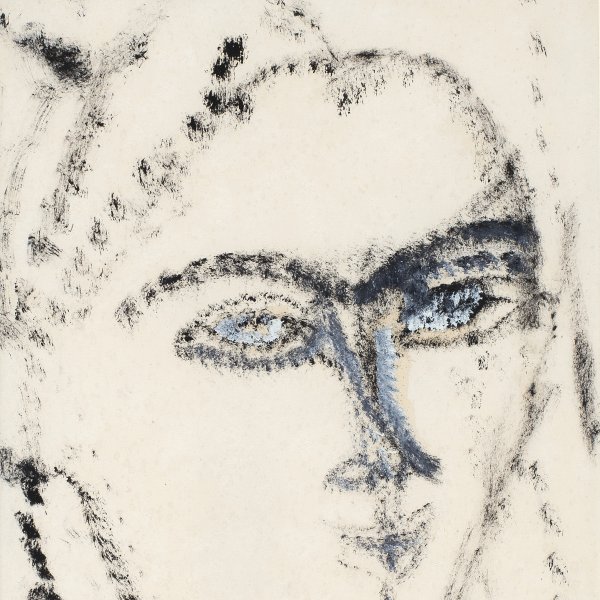Amedeo Modigliani
Livorno, 1884-Paris, 1920
The Italian painter Amadeo Modigliani belonged to a group of avant-garde artists who became established in Paris at the beginning of the twentieth century and shared personal and artistic experiences. Nevertheless, he remained practically detached from the isms and developed a figurative style centred on the human figure, with a special interest in the face and the female body.
Modigliani’s childhood was marked by his frail health, which accompanied him for the rest of his life. He began studying in his city of birth under the painter Guglielmo Micheli, an exponent of plein air painting, and travelled through various Italian cities with his mother. He joined the Florence Accademia di Belle Arti in 1902 and moved to Paris in 1906. He took up residence in Montmartre and enrolled at the Académie Colarossi. He frequented the company of many avant-garde artists and his works became influenced by Henri Toulouse-Lautrec, Fauvism and Pablo Picasso’s Blue Period, as well as the portraits from Paul Cézanne’s final period. In addition he developed an interest in sculpture and in 1909 the doctor Paul Alexandre, who had become his patron, introduced him to Constantin Brancusi. The works of the Romanian sculptor and his admiration for non-European art, especially the African masks that he had probably become acquainted with through Picasso in 1909, influenced the series of heads, standing figures and Caryatids he produced between 1909 and 1914.
In 1914 Modigliani abandoned sculpture and returned to painting. His subsequent works show the translation into two dimensions of many of the stylistic elements developed in the field of sculpture. The portraits from this period are of his numerous mistresses and his friends, among them many members of Paris’s artistic and literary avant-garde, such as Diego Rivera, Chaïm Soutine and Jean Cocteau. His figures tended increasingly towards the stylised faces, elongated necks and blank eyes that became even more accentuated with one of his last models, Jeanne Hébuterne, his partner from 1917.
Amedeo Modigliani failed to achieve recognition for his oeuvre during his short existence. At the only one-man show held during his lifetime at the Galerie Berthe Weill in 1917, his nude paintings were judged obscene and taken down the very day the exhibition opened to the public. Modigliani died in 1920 of tuberculosis, aggravated by drinking and his dire financial situation.
Modigliani’s childhood was marked by his frail health, which accompanied him for the rest of his life. He began studying in his city of birth under the painter Guglielmo Micheli, an exponent of plein air painting, and travelled through various Italian cities with his mother. He joined the Florence Accademia di Belle Arti in 1902 and moved to Paris in 1906. He took up residence in Montmartre and enrolled at the Académie Colarossi. He frequented the company of many avant-garde artists and his works became influenced by Henri Toulouse-Lautrec, Fauvism and Pablo Picasso’s Blue Period, as well as the portraits from Paul Cézanne’s final period. In addition he developed an interest in sculpture and in 1909 the doctor Paul Alexandre, who had become his patron, introduced him to Constantin Brancusi. The works of the Romanian sculptor and his admiration for non-European art, especially the African masks that he had probably become acquainted with through Picasso in 1909, influenced the series of heads, standing figures and Caryatids he produced between 1909 and 1914.
In 1914 Modigliani abandoned sculpture and returned to painting. His subsequent works show the translation into two dimensions of many of the stylistic elements developed in the field of sculpture. The portraits from this period are of his numerous mistresses and his friends, among them many members of Paris’s artistic and literary avant-garde, such as Diego Rivera, Chaïm Soutine and Jean Cocteau. His figures tended increasingly towards the stylised faces, elongated necks and blank eyes that became even more accentuated with one of his last models, Jeanne Hébuterne, his partner from 1917.
Amedeo Modigliani failed to achieve recognition for his oeuvre during his short existence. At the only one-man show held during his lifetime at the Galerie Berthe Weill in 1917, his nude paintings were judged obscene and taken down the very day the exhibition opened to the public. Modigliani died in 1920 of tuberculosis, aggravated by drinking and his dire financial situation.





